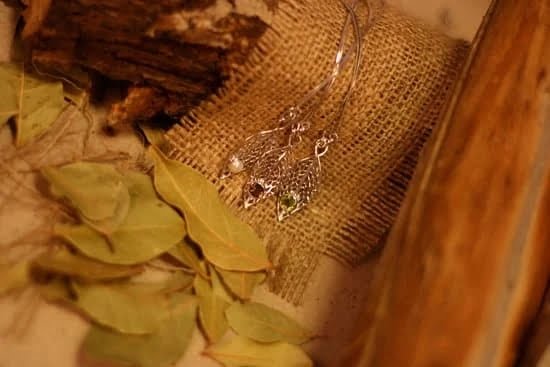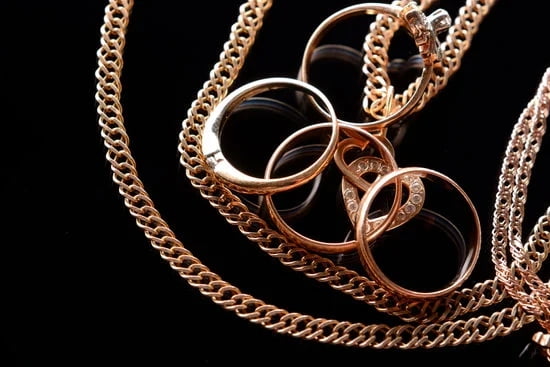Larimar jewelry holds a captivating allure that has captivated jewelry enthusiasts around the world. Its exquisite beauty, combined with its intriguing history, makes it a truly unique gemstone.
Originating from the Dominican Republic, Larimar has become synonymous with exclusivity and elegance. In this article, we delve into the fascinating history of Larimar jewelry, exploring its origins, formation, cultural significance, rise to fame, craftsmanship behind it, alleged healing properties, sustainable mining practices employed for its extraction, and ultimately celebrating the timeless beauty of this enigmatic stone.
The story of Larimar begins with its accidental discovery in the late 20th century. Found exclusively in the Dominican Republic’s southwestern region near Barahona, this remarkable gemstone was stumbled upon by chance. Its formation is a geological marvel that can only be found in these specific conditions. We delve into the details of how Larimar came to be and uncover the mysteries behind its breathtaking blue color.
Furthermore, we explore Larimar’s immense cultural value within the Dominican Republic. This precious stone holds historical appreciation among the indigenous Tano people and plays a role in Dominican folklore. We examine Larimar’s significance within local culture and its portrayal as a symbol of pride and identity.
As Larimar gained recognition globally, it rose to fame within international markets. Influential individuals played an instrumental role in its popularity growth. Throughout this article, we showcase prominent Larimar pieces alongside their illustrious owners who have helped solidify its status as a highly sought-after gemstone.
Additionally, we take a closer look at the meticulous craftsmanship involved in creating each piece of Larimar jewelry. Artisans employ traditional and contemporary techniques to carve and shape this beautiful stone into intricate designs. We highlight their efforts to transform Larimar into wearable works of art that reflect both tradition and innovation.
Join us on an exploration of Larimar’s mesmerizing journey through time – from its geological processes millions of years ago to its significance in the present day. We debunk common myths and explore the alleged healing properties of Larimar, providing scientific explanations behind these claims. Moreover, we delve into the importance of sustainable mining practices and responsible consumption to preserve the legacy of this treasured gemstone.
The Discovery
Larimar, the enchanting gemstone from the Dominican Republic, was not discovered intentionally but rather through a stroke of serendipity. It was in 1916 when Father Miguel Domingo Fuertes Loren stumbled upon this exquisite stone nestled in the mountainous regions of Barahona. While exploring the Bahoruco Range, Father Fuertes Loren noticed some blue rocks along the shores of the Caribbean Sea. Intrigued by their unusual color, he collected several samples and later sent them to be studied.
These blue rocks turned out to be an entirely new and unique gemstone that had never been seen before. Geological studies revealed that Larimar is a variety of pectolite mineral known for its captivating sky-blue hue with streaks of white and green. The distinctive marbled patterns found in Larimar are caused by the presence of copper ions within its crystal structure.
The discovery of Larimar quickly caught the attention of geologists and gem enthusiasts worldwide due to its exceptional beauty and rarity. In 1974, mining operations began to extract Larimar from its primary source in the Los Chupaderos mine in Bahoruco. Today, this striking gemstone is exclusively found in only one location on earth – the province of Barahona in the Dominican Republic.
To gain a better understanding of Larimar’s formation, it is essential to delve into its geological origins. Larimar originated millions of years ago during tectonic plate movements and volcanic activities that took place in the Caribbean region. As magma erupted from beneath the Earth’s crust, it crystallized and formed cavities within volcanic rock formations.
Over time, rainwater seeped into these cavities carrying various minerals such as copper, calcium, and manganese. When these minerals interacted with the pectolite mineral present in volcanic rock fragments, Larimar began to form gradually. The unique combination of volcanic minerals and environmental conditions resulted in the mesmerizing blue color that distinguishes Larimar from other gemstones.
| Year | Significance |
|---|---|
| 1916 | Accidental discovery of Larimar by Father Miguel Domingo Fuertes Loren in Barahona, Dominican Republic. |
| 1974 | Commencement of Larimar mining at the Los Chupaderos mine in Bahoruco. |
Larimar’s Formation
Larimar, with its mesmerizing hues of blue reminiscent of the Caribbean sea, is a captivating gemstone that holds within it a fascinating history of formation spanning millions of years. To truly appreciate the beauty and allure of Larimar jewelry, it is essential to delve into the intricate process by which this extraordinary stone was created.
At its core, Larimar is formed through a convergence of geological processes that occurred deep beneath the Earth’s surface. It is a type of blue pectolite, a mineral composed largely of calcium and sodium silicate hydroxide.
The unique blue coloration found in Larimar can be attributed to traces of copper within its composition. As water permeates through volcanic rock over thousands of years, it carries with it minerals such as copper, which ultimately find their way into voids and fractures within the rock formation.
Over time, these minerals react and crystallize within these voids, giving birth to magnificent formations of Larimar. It is believed that intense heat and pressure from volcanic activity played a crucial role in facilitating this process. As the earth’s crust shifted and volcanic eruptions occurred, sections containing Larimar were brought closer to the surface, where they could eventually be discovered and admired for their unparalleled beauty.
The journey from humble origins deep below the Earth’s surface to becoming prized pieces of Larimar jewelry is nothing short of awe-inspiring. Each piece encapsulates not only the passage of time but also nature’s artistry at its finest. The intricate patterns and hints of varying shades within a single stone are testament to centuries-worth of geological events unfolding layer by layer.
Unraveling the mysteries
The formation process itself offers several mysteries yet to be fully unraveled by scientists and geologists alike. Despite ongoing research efforts, questions still remain about how Larimar managed to form in such concentrated quantities specifically within the Dominican Republic. The complex interplay between volcanic activity, tectonic plate movements, and the perfect conditions for pectolite formation continues to intrigue and captivate experts in the field.
As admirers of Larimar jewelry, we are fortunate to be able to hold a piece of this geological journey in our hands. Whether it is a pendant, a ring, or a bracelet, each piece of Larimar jewelry holds a story that stretches back through time. With every glance and touch, we can appreciate the unique beauty that took millions of years to create.
Larimar’s Significance in Dominican Culture
In the Dominican Republic, Larimar holds a deep cultural significance that goes back centuries. The stone is not only cherished for its beauty, but it also carries historical and spiritual value for the people of this Caribbean nation.
The indigenous Tano people of the Dominican Republic were among the first to appreciate and utilize Larimar. They considered it a sacred stone and believed it to have healing powers. Larimar was often used in their religious ceremonies and rituals, symbolizing connection to the sea and the sky.
Over time, as colonization and outside influences shaped the Dominican Republic’s history, Larimar continued to hold cultural importance. It became a symbol of national pride and identity for Dominicans. The stone’s unique blue color mirrors the crystal-clear waters of the Caribbean Sea surrounding the island, making it an emblematic gemstone of this tropical paradise.
Today, Larimar is celebrated as one of Dominican Republic’s national treasures. It is highly regarded both locally and globally, with numerous jewelry artisans incorporating this captivating stone into their creations. The government has taken initiatives to protect Larimar deposits in order to preserve its legacy and ensure sustainable mining practices are followed.
To showcase its cultural significance, Larimar has been featured prominently in various forms of art and literature in the Dominican Republic. From paintings and sculptures to poetry and music, artists have drawn inspiration from this enchanting gemstone to express their love for their country and its rich heritage.
| Key Points | Details |
|---|---|
| Larimar’s Origin | The Tano people used Larimar in religious ceremonies |
| National Pride | Larimar is considered a symbol of national identity for Dominicans |
| Sustainable Mining | The government has implemented measures to protect Larimar deposits and promote responsible mining practices |
| Cultural Expression | Larimar has inspired various forms of art and literature in the Dominican Republic |
Rise to Fame
Larimar, once a hidden gem of the Caribbean, has gained significant recognition on the global stage. Its captivating beauty and unique properties have attracted the attention of jewelry enthusiasts and collectors from around the world. In this section, we will explore the factors that contributed to Larimar’s rise in fame, influential individuals who played a role in its recognition, as well as showcase some prominent Larimar pieces and their notable owners.
The growing popularity of Larimar jewelry can be attributed to several factors. One key factor is its distinct blue color that ranges from pale sky blue to deep ocean blue. This captivating hue is reminiscent of the crystal-clear waters surrounding the Dominican Republic, where Larimar is exclusively found. The stone’s calming energy and its association with tranquility resonate with individuals seeking a piece that reflects their connection with nature.
To further fuel its popularity, influential individuals have championed Larimar as a sought-after gemstone. One notable personality is Amber Valletta, an American supermodel and actress who discovered Larimar during her travels in the Caribbean. Upon returning to the United States, Valletta frequently wore Larimar jewelry at public events and interviews, introducing this enigmatic stone to a broader audience.
Additionally, renowned designers such as Nialaya Jewelry and Marahlago have incorporated Larimar into their collections, showcasing its elegance and versatility. These collaborations between talented designers and Larimar artisans have elevated the stone’s status within the global jewelry industry.
Prominent Larimar pieces have also caught the attention of collectors and connoisseurs alike. The “Larimar Sun,” a stunning necklace adorned with multiple larimar stones set in intricate gold designs, was acquired by singer-songwriter Beyoncé Knowles-Carter during her visit to the Dominican Republic. The necklace quickly became an iconic symbol of glamorous luxury coupled with vibrant island charm.
Another noteworthy piece is the “Larimar Princess” ring, worn by Queen Letizia of Spain during a state visit to the Dominican Republic. The ring’s regal design, featuring a large Larimar gemstone surrounded by diamonds, perfectly complemented the queen’s elegant attire, further solidifying Larimar as a gemstone fit for royalty.
As Larimar continues to gain recognition and popularity worldwide, its timeless beauty and unique charm will undoubtedly inspire even more remarkable creations and captivate the hearts of jewelry enthusiasts around the globe. Whether cherished for its aesthetic appeal or admired for its metaphysical properties, Larimar represents a true treasure from the Dominican Republic that has firmly established itself in the realm of fine jewelry.
Larimar as a Work of Art
Larimar, with its captivating beauty and mesmerizing blue hues, has long been admired as a work of art. The craftsmanship involved in creating Larimar jewelry is a testament to the skill and talent of the artisans who bring this stunning gemstone to life.
Intricate Process of Carving, Shaping, and Polishing Larimar Jewelry
Creating Larimar jewelry involves a meticulous process that requires precision and attention to detail. The first step in crafting Larimar jewelry is selecting the finest quality stones. Skilled craftsmen carefully examine each piece of raw Larimar to determine its suitability for jewelry making.
Once the stones have been selected, they are cut into various shapes and sizes. This process involves using saws or diamond-tipped tools to carefully shape the gemstone while preserving its natural beauty. With skilled hands, artisans carve intricate designs onto the surface of the stone, highlighting its unique patterns and color variations.
After carving, Larimar jewelry undergoes a polishing stage where it is meticulously smoothed and refined. This stage requires patience as artisans work tirelessly to achieve a glossy finish that accentuates the stone’s beauty. It is also during this stage that any imperfections or impurities are removed from the surface, ensuring that every piece of Larimar jewelry meets high-quality standards.
Exploring Traditional and Contemporary Techniques Used by Artisans
The craftsmanship behind Larimar extends beyond traditional techniques; it also incorporates contemporary methods that push artistic boundaries. While traditional Dominican techniques involve hand-carving using basic tools, modern technology has allowed for more intricate designs and precise shaping.
Today, artisans utilize advanced equipment such as electric grinders and lathes to create elaborate pieces with complex designs. These modern tools enable artists to bring their creative visions to life while preserving the authenticity of Larimar’s natural characteristics.
Despite technological advancements, many artisans still choose to use traditional tools for certain aspects of crafting Larimar jewelry. The use of these tools not only pays homage to the rich cultural heritage of the Dominican Republic but also adds a unique touch to each piece, showcasing the artisan’s personal touch and skills.
Highlighting Unique Designs and Styles of Larimar Jewelry
Larimar jewelry comes in a wide array of designs and styles, making it truly versatile as a form of art. From elegant pendants and statement rings to delicate earrings and intricate bracelets, there is a Larimar piece for every style and occasion.
Artisans often incorporate their own creative flair into Larimar jewelry, resulting in one-of-a-kind pieces that showcase their individual artistic expression. Some designers draw inspiration from nature, crafting pieces that resemble seashells or waves to evoke the tranquil essence of the Caribbean Sea. Others create bold and contemporary designs that reflect modern fashion trends while still highlighting Larimar’s unique allure.
Whether it is a simple pendant with a polished Larimar stone or an elaborate masterpiece adorned with intricate silverwork, each piece of Larimar jewelry tells its own story through its design. The craftsmanship behind every creation ensures that owning a piece of Larimar jewelry is not only an investment in beauty but also in artistry.
Larimar jewelry is more than just an accessory; it is a work of art that showcases the skill, dedication, and creativity of artisans. Through their craftsmanship, they transform raw gemstones into exquisite pieces that captivate and inspire. Whether you are seeking a timeless classic or a contemporary masterpiece, Larimar jewelry offers something truly remarkable for every admirer of fine artistry.
Healing Properties of Larimar
Larimar, also known as the “Stone of Atlantis,” has long been associated with various metaphysical and healing properties. This section explores the beliefs surrounding Larimar’s alleged healing abilities and delves into both the myths and scientific explanations behind these claims.
Many believe that Larimar possesses powerful emotional, spiritual, and physical healing properties. It is said to stimulate the throat chakra, promoting clear communication and aiding in self-expression. Larimar is also believed to bring harmony and balance to its wearer, soothing stress, anxiety, and negative emotions. Additionally, it is thought to help release energetic blockages, allowing for personal growth and transformation.
While these claims may seem mystical or anecdotal in nature, some scientific theories provide possible explanations for the alleged healing qualities of Larimar. One theory suggests that Larimar’s unique blue color resonates with the body’s electromagnetic field, promoting a sense of calmness and well-being. Another explanation relates to the stone’s formation deep within volcanic eruptions, which could imbue it with powerful energy from Earth’s core.
Despite these beliefs and theories surrounding its healing properties, it is essential to approach them with a critical mindset. Scientific evidence supporting Larimar’s specific health benefits is currently limited. Therefore, individuals should not solely rely on Larimar or any other alternative therapy as a substitute for traditional medicine or professional medical advice.
Nevertheless, many wearers of Larimar jewelry have reported personal experiences that align with the stone’s purported properties. While science may not have all the answers when it comes to metaphysical phenomena, these personal anecdotes serve as testaments to Larimar’s positive impact on individuals’ lives.
Sustainable Mining
Larimar, also known as the “blue stone of the Caribbean,” possesses a rich history and cultural significance rooted in the Dominican Republic. However, with its increasing popularity among jewelry enthusiasts worldwide, concerns about sustainability and responsible sourcing have come to the forefront. In this section, we delve into the importance of sustainable mining practices in preserving the legacy of Larimar.
Sustainable mining practices are crucial for ensuring that Larimar continues to be available for future generations. The unique geological formation of Larimar makes it a finite resource, located only in specific areas of the Dominican Republic. To protect these limited deposits, strict regulations have been implemented to control mining activities and minimize environmental impact.
One such initiative is the use of small-scale artisanal mining methods rather than large-scale industrial operations. By focusing on smaller operations, miners can carefully extract Larimar without causing significant damage to surrounding ecosystems. Additionally, this approach allows local communities to benefit economically from Larimar mining while promoting sustainable development.
Efforts are also being made to rehabilitate and restore areas affected by previous mining activities. This involves reforestation initiatives and implementing measures to counter soil erosion and water pollution caused by mining operations. By prioritizing environmental conservation alongside economic interests, sustainable mining practices aim to strike a balance between preserving Larimar’s natural habitat and meeting market demands.
Consumers also play a vital role in supporting sustainable mining of Larimar. By choosing jewelry from reputable sources that adhere to ethical practices, individuals can contribute to the safeguarding of Larimar’s legacy. Transparency throughout the supply chain is key, ensuring that each step – from extraction to production – adheres to sustainability standards.
Conclusion
In conclusion, Larimar jewelry holds a timeless beauty and allure that captivates individuals around the world. From its accidental discovery in the Dominican Republic to its rise in fame and global recognition, Larimar has become synonymous with elegance and exclusivity. The formation of Larimar over millions of years reveals its intricate journey through time, resulting in its unique blue color and mesmerizing patterns.
Beyond its aesthetic appeal, Larimar also holds significant cultural value within the Dominican Republic. From the indigenous Tano people who regarded it with historical appreciation to its depiction in Dominican folklore, Larimar has woven itself into the fabric of Dominican culture. Its symbolism as a stone of healing and protection further adds to its significance and makes it a cherished gemstone among wearers.
The craftsmanship behind Larimar jewelry is a testament to the skill and artistry of artisans. The delicate process of carving, shaping, and polishing Larimar showcases their dedication to creating truly remarkable pieces. Whether through traditional techniques or contemporary designs, each piece of Larimar jewelry is unique and reflects the natural beauty found within this enigmatic stone.
Preserving the legacy of Larimar is just as important as appreciating its beauty. Sustainable mining practices are crucial in ensuring the long-term availability of this precious gemstone. Efforts to protect Larimar deposits in the Dominican Republic aim to maintain their integrity and minimize environmental impact. By encouraging responsible consumption of Larimar jewelry, we can contribute to preserving this natural wonder for future generations to enjoy.
In essence, Larimar jewelry encompasses not only visual splendor but also a rich history that stretches back millions of years. As readers explore and appreciate this unique gemstone from the Caribbean, they will discover that it embodies lasting appeal and value that transcends time. Whether worn for personal adornment or cherished as an exquisite piece of art, there is no denying the timeless beauty and significance that surrounds Larimar jewelry from the Dominican Republic.

Welcome to my jewelry blog! My name is Sarah and I am the owner of this blog.
I love making jewelry and sharing my creations with others.
So whether you’re someone who loves wearing jewelry yourself or simply enjoys learning about it, be sure to check out my blog for insightful posts on everything related to this exciting topic!





